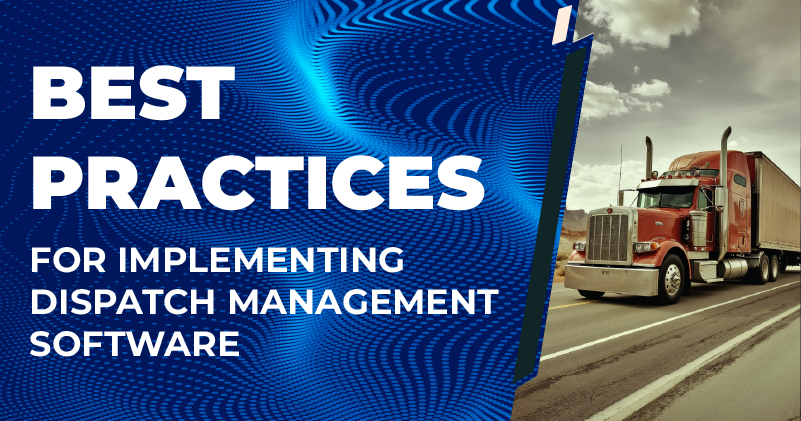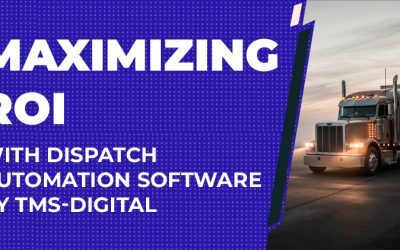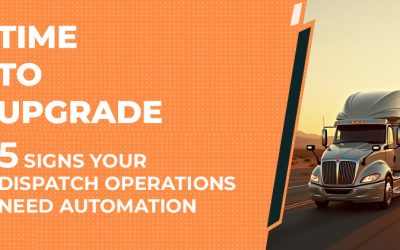
In today’s fast-moving logistics and transportation industry, speed, accuracy, and efficiency aren’t optional — they’re the lifeblood of success. Whether you’re managing a regional fleet or operating a nationwide logistics company, the ability to dispatch management loads quickly and intelligently is what keeps margins strong and customers happy.
This is where dispatch management software comes in. The right platform streamlines operations, cuts costs, and boosts service quality. But there’s a catch: simply buying software isn’t enough. The true ROI depends on how well it’s implemented and integrated into your existing workflows.
Here are the 7 best practices to ensure your investment in dispatch management software delivers maximum value.
-
Define Clear Objectives Before You Start
Every successful implementation begins with clarity. Ask yourself:
- Are you trying to reduce downtime and idle fleet hours?
- Do you need real-time visibility for customers?
- Is better dispatcher-to-driver communication your top priority?
By outlining these goals up front, you’ll ensure your chosen platform aligns directly with your business challenges. For example, a fleet focused on faster delivery windows might prioritize route optimization features, while another struggling with compliance may need real-time reporting tools.
-
Choose the Right Software for Your Needs
Not all dispatch solutions are created equal. The best system should be:
- Smart – with AI-powered route optimization.
- Transparent – with real-time tracking and delivery visibility.
- Efficient – with automated scheduling that reduces manual workload.
- Flexible – integrating seamlessly with ERP, CRM, GPS, and TMS systems.
A Verizon Connect study found that fleets using route optimization software cut fuel costs by 15% and reduced delivery times by 20%. Choosing the right platform lays the foundation for scalability and measurable ROI.
-
Take a Phased Implementation Approach
Avoid the “big bang” rollout. Instead, start small — perhaps with one fleet, branch, or region — and refine your workflows as you go. A phased deployment reduces risk, builds internal confidence, and allows your team to adapt smoothly.
-
Train Your Team Thoroughly
Even the most advanced software fails if users don’t know how to maximize its features. Invest in training that covers:
- Scheduling & dispatch workflows
- Mobile app usage for drivers
- Best practices for real-time adjustments
- Data reporting and analytics
According to Deloitte, organizations that provide comprehensive training achieve 70% higher ROI from new software investments.
-
Prioritize Integration with Existing Systems
Dispatch doesn’t operate in a silo. For maximum efficiency, integrate your software with tools you already use:
- ERP for inventory and warehouse data.
- CRM for seamless customer communication.
- GPS/ELD for compliance and real-time tracking.
When your dispatch system talks to your existing platforms, you eliminate duplicate work, improve accuracy, and enable true end-to-end logistics visibility.
-
Monitor KPIs and Continuously Improve
Once implemented, the work isn’t over. Track key performance indicators (KPIs) such as:
- Delivery Times – Are you hitting promised ETAs?
- Fuel Efficiency – Are optimized routes reducing costs?
- Customer Satisfaction – Are service levels improving?
- Driver Productivity – Is downtime decreasing?
Use this data to fine-tune processes and adapt to changing business demands.
-
Leverage Data for Strategic Growth
Modern dispatch management software doesn’t just automate — it analyzes. The insights from route data, driver performance, and delivery trends allow you to:
- Forecast demand more accurately
- Spot recurring inefficiencies
- Scale operations confidently
McKinsey reports that data-driven decision-making improves logistics efficiency by 20–30%. The fleets leveraging analytics are the ones staying ahead.
Conclusion
Implementing dispatch management software isn’t just about plugging in a new system — it’s about transforming how your logistics operation runs. By defining objectives, selecting the right platform, training your team, and integrating with existing tools, you’ll unlock faster dispatching, lower costs, and happier customers.
At TMS-Digital, we’ve built solutions like TMS-Dispatch, TMS-Trucker, and IFTA Reporting to make this transformation seamless. Our tools are designed for fleets of all sizes, giving you automation, intelligence, and clarity without the complexity.









